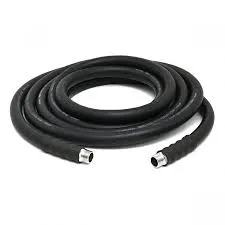335345435
dec . 05, 2024 07:53 Back to list
Versatile Hydraulic Swivel Elbow Connectors for Efficient Fluid Delivery Systems
Hydraulic Swivel Elbow Fittings Essential Components for Fluid Power Systems
Hydraulic systems are integral to modern industrial machinery, allowing for efficient operation and movement through the transmission of power via fluids. Among the critical components in these systems are hydraulic fittings, specifically hydraulic swivel elbow fittings. These fittings play a vital role in ensuring the reliability and flexibility of hydraulic systems, making them indispensable in various applications.
Understanding Hydraulic Swivel Elbow Fittings
Hydraulic swivel elbow fittings are designed to connect hoses and tubes in a way that allows for rotation while maintaining a secure seal. This design feature is particularly important in environments where movement is required, as they can reduce wear and tear on hoses caused by flexing and twisting. The elbow shape of these fittings allows for directional changes in fluid flow, making it easier to navigate tight spaces in machinery installations.
The primary function of a swivel elbow fitting is to provide a leak-proof connection that can rotate 360 degrees. This rotational capability ensures that the hoses do not have to endure torsional stress, which can lead to failure or leaks over time. The fittings are typically constructed from durable materials such as stainless steel, brass, or high-grade plastic, which offer resistance to corrosion and wear, thereby extending the lifespan of the hydraulic system.
Applications and Benefits
Hydraulic swivel elbow fittings are widely used across various industries, including construction, manufacturing, automotive, and agriculture. In construction equipment, such as excavators and loaders, these fittings are crucial for hydraulic lines that operate cylinders, pumps, and motors. Similarly, in manufacturing plants, they are used in assembly lines and industrial machines where hydraulic power is essential for operational efficiency.
The benefits of using hydraulic swivel elbow fittings are numerous
1. Flexibility in Design The ability to rotate allows engineers to design systems with more freedom, accommodating the spatial constraints of machinery layouts. This flexibility simplifies the routing of hoses and decreases the chances of kinking or damaging them.
hydraulic swivel elbow fittings

2. Reduced Maintenance Costs By minimizing wear on hoses and connections, swivel elbow fittings help reduce the frequency of replacements or repairs. This not only cuts costs but also down-time in production processes, leading to higher overall efficiency.
3. Safety Ensuring that hydraulic systems are leak-proof is vital for the safety of operators and equipment. Swivel elbow fittings provide reliable seals that prevent fluid leaks, thus safeguarding personnel and preventing environmental contamination.
4. Versatility These fittings can be used with a variety of hydraulic fluids and in different temperature ranges, enhancing their applicability in diverse environments.
Choosing the Right Fittings
When selecting hydraulic swivel elbow fittings, several factors should be considered. The pressure ratings of the fittings must match or exceed those of the hydraulic system to ensure safety and reliability. Additionally, compatibility with the fluid type and environmental conditions is crucial, as certain materials may not withstand specific fluids or temperature extremes.
Moreover, proper sizing is essential. Choosing the right diameter ensures optimal flow rates and minimizes pressure drops, while also preventing hydraulic shock that can occur with incorrect fittings.
Conclusion
In summary, hydraulic swivel elbow fittings are fundamental components that enhance the functionality and efficiency of hydraulic systems across various industries. Their ability to allow for flexibility and movement while ensuring leak-proof connections makes them an ideal choice in applications that demand reliability and durability. As industries continue to evolve and adopt more advanced hydraulic technology, these fittings will remain an essential element in the design and maintenance of fluid power systems. Emphasizing quality and suitable application will ensure the longevity and effectiveness of hydraulic systems for years to come.
-
SAE 100 R17 Black Smooth Cover Hydraulic Hose
NewsMar.07,2025
-
SAE 100 R17 Black Smooth Cover Hydraulic Hose
NewsMar.07,2025
-
SAE 100 R17 Black Smooth Cover Hydraulic Hose
NewsMar.07,2025
-
SAE 100 R17 Black Smooth Cover Hydraulic Hose
NewsMar.07,2025
-
SAE 100 R17 Black Smooth Cover Hydraulic Hose
NewsMar.07,2025
-
steel wire braided hydraulic hose
NewsMar.07,2025



